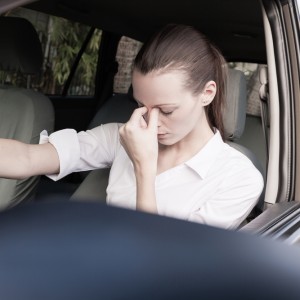 Many people spend hours in their daily commute to work, without considering that they are actually increasing their exposure to air pollution. Researchers in the United Kingdom at the University of Surrey have discovered that when drivers spend even 2% of their trip driving through intersections with traffic lights, this contributes to approximately 25% of their exposure to unhealthy air pollution particles.
Many people spend hours in their daily commute to work, without considering that they are actually increasing their exposure to air pollution. Researchers in the United Kingdom at the University of Surrey have discovered that when drivers spend even 2% of their trip driving through intersections with traffic lights, this contributes to approximately 25% of their exposure to unhealthy air pollution particles.
The article, titled Characterisation of nanoparticle emissions and exposure at traffic intersections through fast–response mobile and sequential measurements appeared in the February 3rd issue of Atmospheric Environment.
He also speculated about the contribution of increased traffic to pollutant exposure. According to Kumar, “Our time spent travelling in cars has remained fairly constant during the past decade despite the efforts to reduce it and with more cars than ever joining the roads, we are being exposed to increasing levels of air pollution as we undertake our daily commutes.”
Kumar advised commuters that there may be ways to limit exposure to the toxins, stating, “It’s not always possible to change your route to avoid these intersections, but drivers should be aware of the increased risks at busy lights. The best ways to limit your exposure is to keep vehicle windows shut, fans off and try to increase the distance between you and the car in front where possible. Pedestrians regularly crossing such routes should consider whether there might be other paths less dependent on traffic light crossings. Local transport agencies could also help by synchronising traffic signals to reduce waiting time and consider alternative traffic management systems such as flyovers.”

